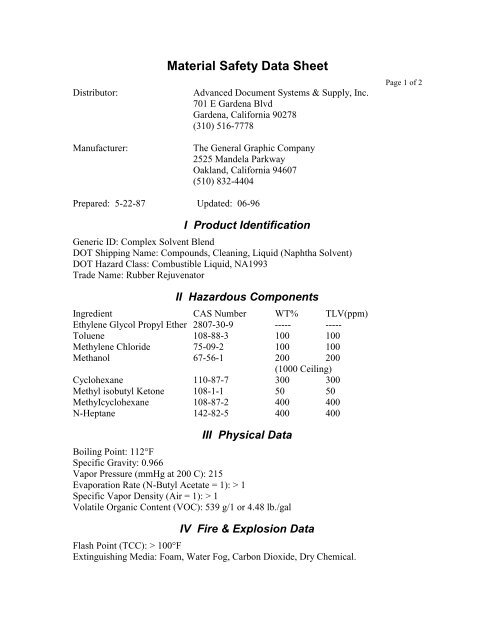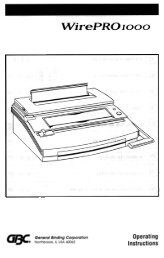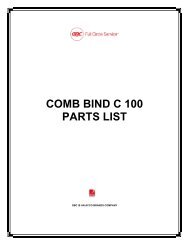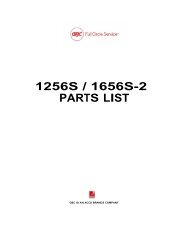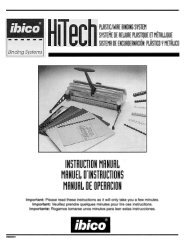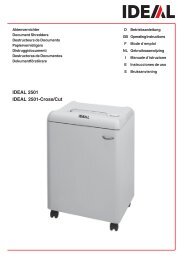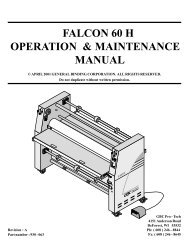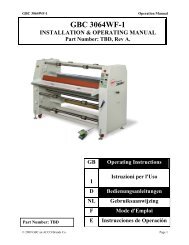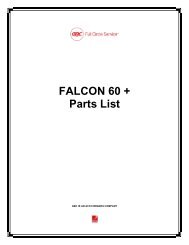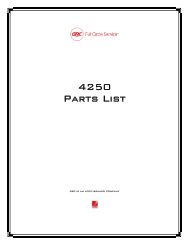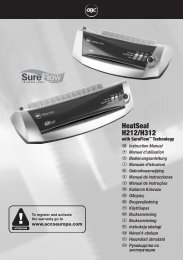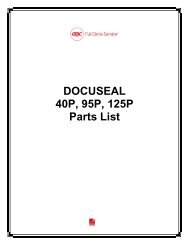Material Safety Data Sheet - Advanced Document Systems & Supply
Material Safety Data Sheet - Advanced Document Systems & Supply
Material Safety Data Sheet - Advanced Document Systems & Supply
Create successful ePaper yourself
Turn your PDF publications into a flip-book with our unique Google optimized e-Paper software.
Distributor:Manufacturer:<strong>Material</strong> <strong>Safety</strong> <strong>Data</strong> <strong>Sheet</strong><strong>Advanced</strong> <strong>Document</strong> <strong>Systems</strong> & <strong>Supply</strong>, Inc.701 E Gardena BlvdGardena, California 90278(310) 516-7778The General Graphic Company2525 Mandela ParkwayOakland, California 94607(510) 832-4404Page 1 of 2Prepared: 5-22-87 Updated: 06-96I Product IdentificationGeneric ID: Complex Solvent BlendDOT Shipping Name: Compounds, Cleaning, Liquid (Naphtha Solvent)DOT Hazard Class: Combustible Liquid, NA1993Trade Name: Rubber RejuvenatorII Hazardous ComponentsIngredient CAS Number WT% TLV(ppm)Ethylene Glycol Propyl Ether 2807-30-9 ----- -----Toluene 108-88-3 100 100Methylene Chloride 75-09-2 100 100Methanol 67-56-1 200 200(1000 Ceiling)Cyclohexane 110-87-7 300 300Methyl isobutyl Ketone 108-1-1 50 50MethyIcyclohexane 108-87-2 400 400N-Heptane 142-82-5 400 400III Physical <strong>Data</strong>Boiling Point: 112°FSpecific Gravity: 0.966Vapor Pressure (mmHg at 200 C): 215Evaporation Rate (N-Butyl Acetate = 1): > 1Specific Vapor Density (Air = 1): > 1Volatile Organic Content (VOC): 539 g/1 or 4.48 lb./galIV Fire & Explosion <strong>Data</strong>Flash Point (TCC): > 100°FExtinguishing Media: Foam, Water Fog, Carbon Dioxide, Dry Chemical.
Rubber Rejuvenator Page 2 of 2Special Firefighting Procedures: Wear self contained breathing apparatus with a fullfacepiece. Keep containers cool with water spray.Unusual Fire & Explosion Hazards: Vapors are heavier than air and may travel alongfloor to ignition source.V Health Hazard <strong>Data</strong>Effects of Acute OverexposureEyes: Can cause irritation, redness, tearing, blurred vision.Skin: Can cause irritation, defatting, dermatitis.Inhalation: Nasal and respiratory irritation.Swallowing: Can cause gastrointestinal irritation, nausea, vomiting anddiarrhea.First AidEyes: Flush with water lifting upper and lower lids. Get medicalattention.Skin: Wash exposed area with soap and water.Inhaled: Remove to fresh air. Give oxygen or artificial respiration asrequired. Get Medical Attention.Swallowed: DO NOT induce vomiting. Get medical attention.Chronic Effects of OverexposureCardiovascular stress. May effect liver, kidneys and respiratory system.VI Reactivity <strong>Data</strong>Hazardous Polymerization: Will not occur.Stability: StableIncompatibility (Avoid Contact With): Strong oxidizing agents.VII Spill or Leak ProceduresSpill Procedures: Eliminate all ignition sources. Clean with absorbent materials and placein closed containers for waste disposal.Waste Disposal: Consult Federal, State and Local disposal authorities for approveddisposal procedures.VIll Special Protection & PrecautionsRespiratory Protection: Approved organic vapor type respirator if TLV (or PEL) valuesare exceeded.Ventilation: Provide ventilation to maintain safe exposure levels.Protective Gloves: Wear resistant gloves such as: Neoprene rubber.Eye Protection: Chemical splash goggles in compliance with OSHA regulations.Other Protective Equipment: Wear impervious clothing if desired.Comments: Containers of this material may be hazardous when empty. Since emptycontainers retain product residues (vapor, liquid and/or solid), all hazardprecautions in this datasheet must be observed.


